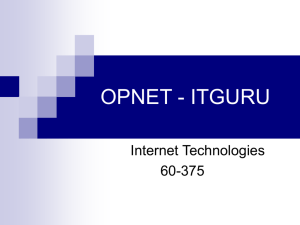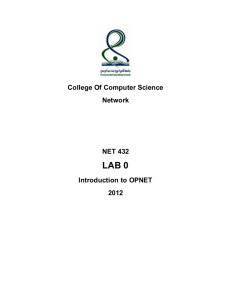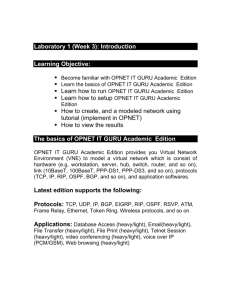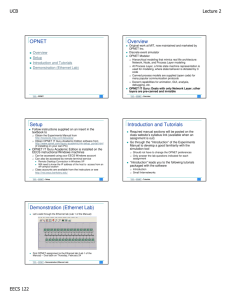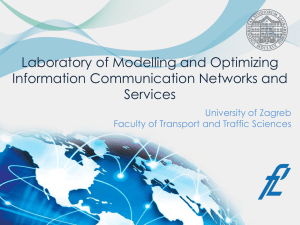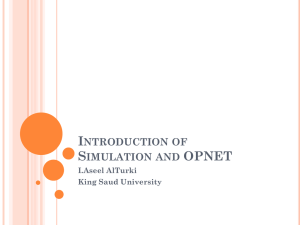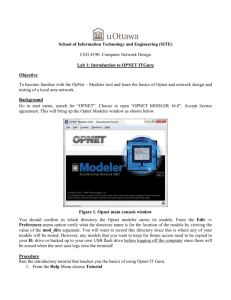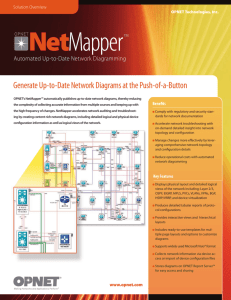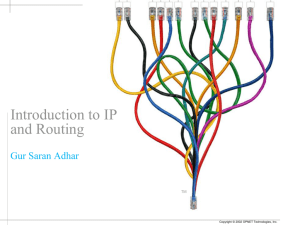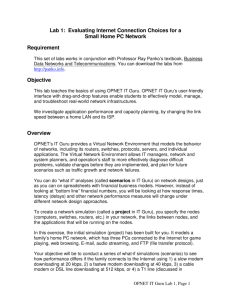Introduction to Network Simulators
advertisement
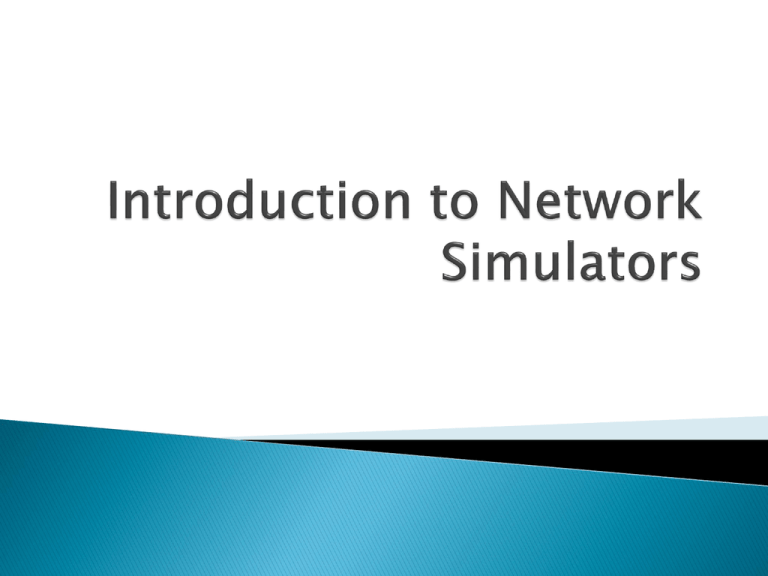
A network simulator is a piece of software or hardware that predicts the behavior of a network, without an actual network being present. Network simulators serve a variety of needs. Compared to the cost and time involved in setting up an entire test bed containing multiple networked computers, routers and data links, network simulators are relatively fast and inexpensive allow engineers to test scenarios that might be particularly difficult or expensive to emulate using real hardware ◦ simulating the effects of a sudden burst in traffic ◦ a DoS attack on a network service ◦ test new networking protocols or changes to existing protocols in a controlled and reproducible environment With the help of simulators one can design hierarchical networks using various types of nodes like computers, hubs, bridges, routers, optical cross-connects, multicast routers, mobile units, MSAUs etc Various types of Wide Area Network (WAN) technologies like TCP, ATM, IP etc and Local Area Network (LAN) technologies like Ethernet, token rings etc. can all be simulated with a typical simulator the user can test, analyze various standard results apart from devising some novel protocol or strategy for routing etc a network simulator must enable a user to ◦ ◦ ◦ ◦ represent a network topology, specifying the nodes on the network, the links between those nodes and the traffic between the nodes More complicated systems may allow the user to specify everything about the protocols used to handle network traffic. Graphical applications allow users to easily visualize the workings of their simulated environment. Text-based applications may provide a less intuitive interface, but may permit more advanced forms of customization. Others, such as GTNets, are programmingoriented, providing a programming framework that the user then customizes to create an application that simulates the networking environment to be tested. Ns2- Command based Opnet- Graphical OMNET++ QualNet GlomoSim OPNET solutions address application performance management; network planning, engineering, and operations; and network R&D. OPNET solutions for Network engineering, operations, and planning include the following ◦ IT Guru Network Planner helps enterprises plan their network for new applications or technologies. ◦ SP Guru Network Planner and SP Guru Transport Planner optimize service provider network designs for capacity, cost, QoS, and survivability. ◦ Sentinel is OPNET's network configuration auditing solution and it is used to ensure network integrity, security, and policy compliance. ◦ NetMapper complements OPNET's Sentinel and Guru solutions by automatically creating content-rich network diagrams in Microsoft Visio format. ◦ OPNET nCompass, a software solution for the NOC, enables operators to visualize real-time network topology, traffic, events, and status in a single view. OPNET Modeler, a network modeling and simulation software solution, is one of OPNET's flagship solutions and also its oldest product Global Mobile Information System Simulator (GloMoSim) is a network protocol simulation software that simulates wireless and wired network systems. GloMoSim is designed using the parallel discrete event simulation capability provided by Parsec, a parallel programming language. GloMoSim currently supports protocols for a purely wireless network. It uses the Parsec compiler to compile the simulation protocols. ns was built in C++ and provides a simulation interface through OTcl, an object-oriented dialect of Tcl. The user describes a network topology by writing OTcl scripts, and then the main ns program simulates that topology with specified parameters. The NS2 makes use of flat earth model in which it assumes that the environment is flat without any elevations or depressions. However the real world does have geographical features like valleys and mountains. NS2 fails to capture this model in it.
